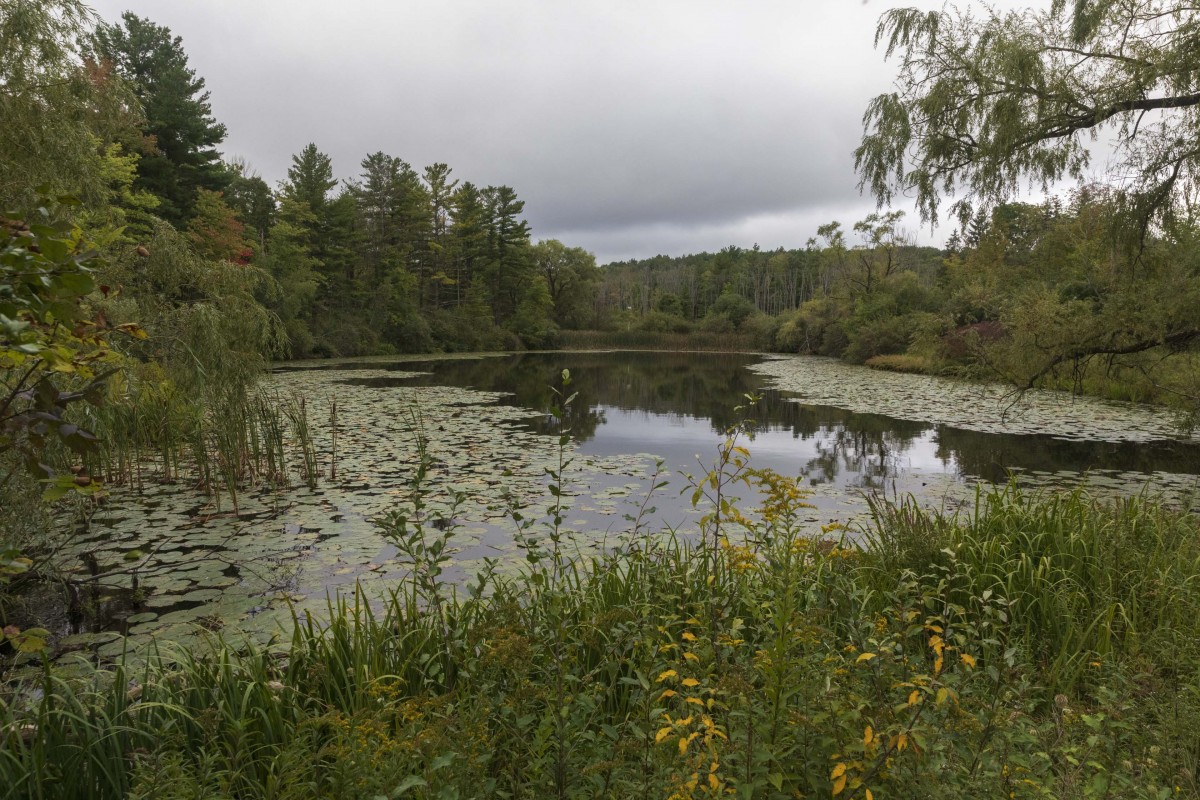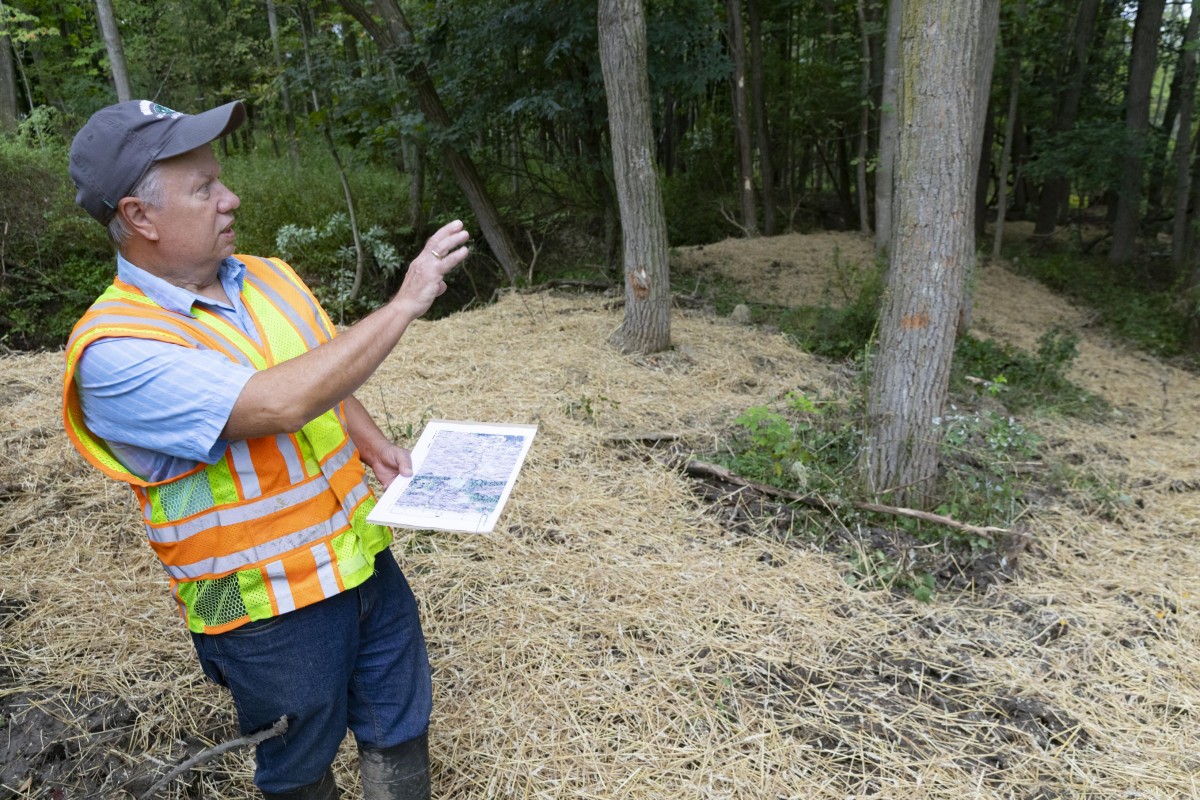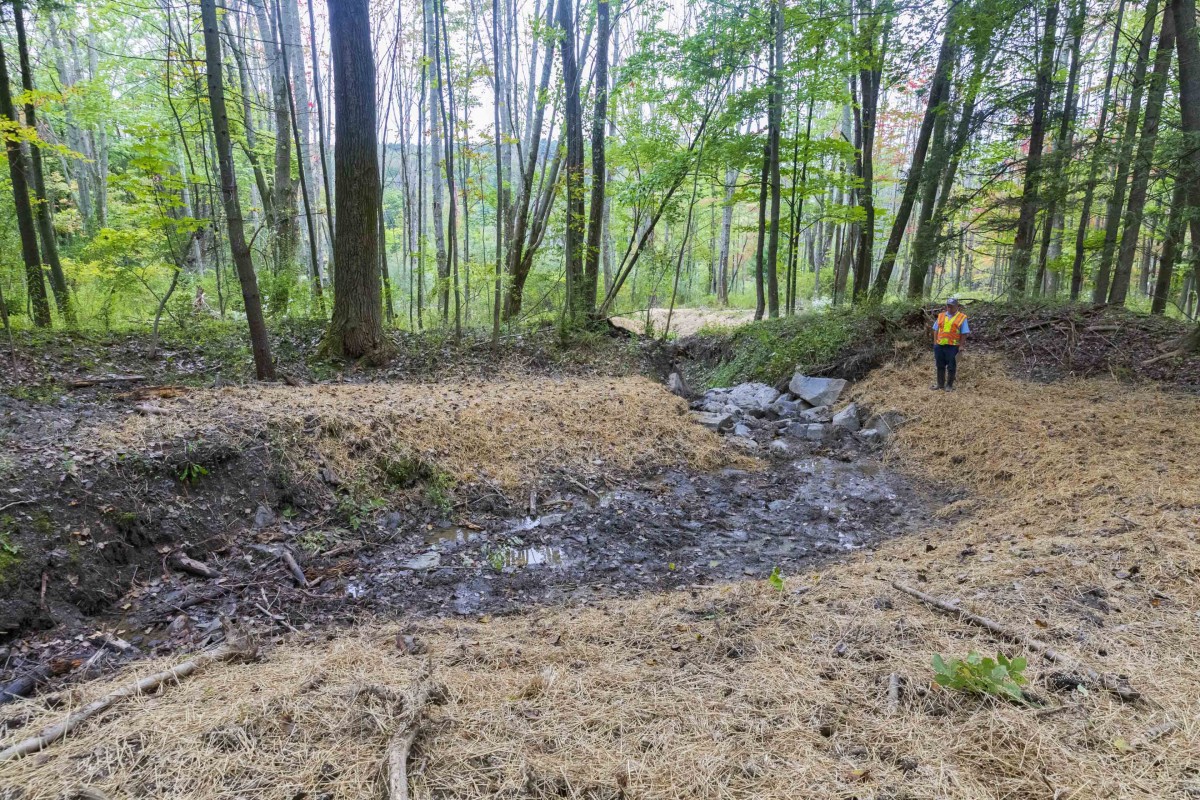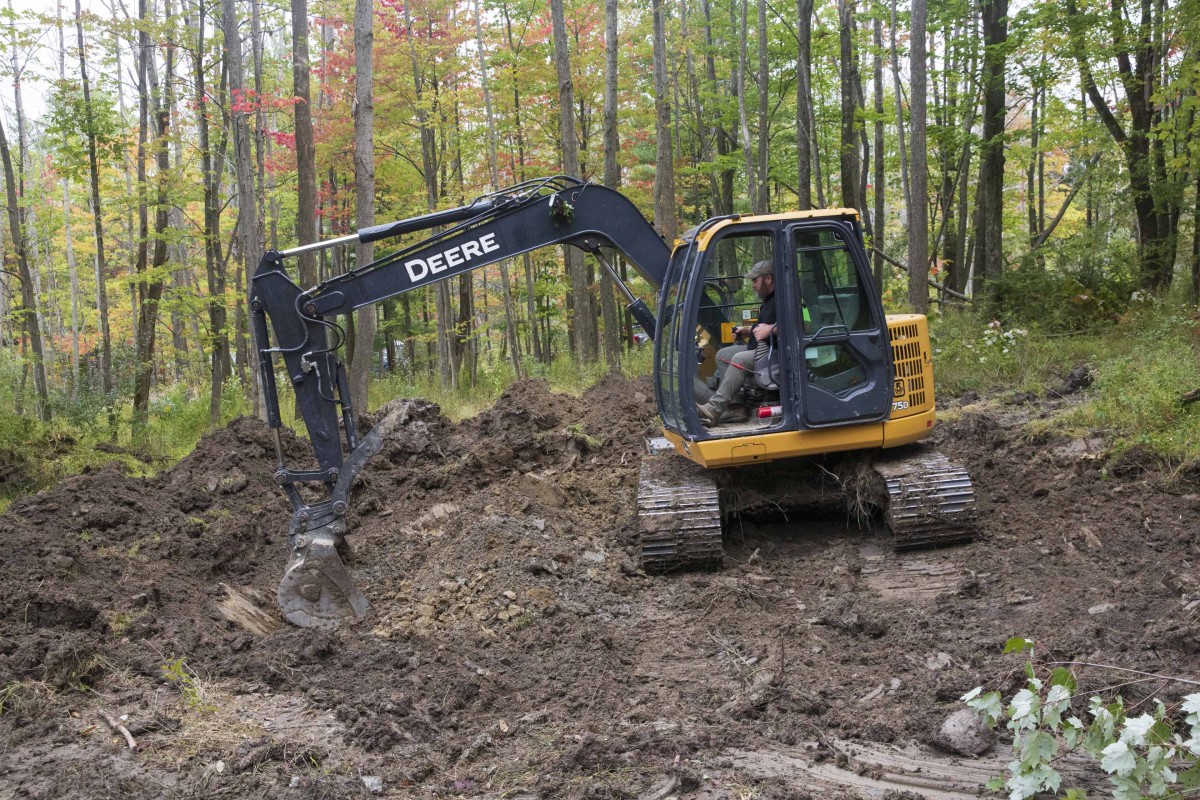Nuthatch Hollow: Improvements stem erosion, promote wildlife habitat

On the far side of a pond ringed with reeds and lily pads, the rush of traffic disappears into the rustle of leaves and the call of the occasional bird.
Look around Nuthatch Hollow and remnants of its history are everywhere: blocks from an old mill dam on a creek, straight lines of pines from its days as a tree plantation, a small building used by local businessman and environmentalist Robert Schumann and his family to watch birds on the pond, which was constructed in the 1960s.
Today, the 75-acre property on Bunn Hill Road serves as a living laboratory for students in a variety of disciplines. And the site continues to evolve: This fall, the Upper Susquehanna Coalition (USC) helped reshape land features there, to curtail erosion and create new habitat for amphibians.
“This is going to be an experimental watershed, a little less busy than the Nature Preserve,” said Professor of Geological Sciences and Environmental Studies Joseph Graney, associate director of the Center for Integrated Watershed Studies.
The USC coordinates soil and water conservation districts in a 22-county area, working to leverage grant dollars. As a part of the wetlands team, USC wetlands biologist Jeremy Waddell works on both public and private land, mitigating runoff and ensuring healthier ecosystems.
The USC team did exactly that at Nuthatch Hollow. A culvert under Bunn Hill Road channeled rain into a streambed that became increasingly gouged through the years, sending silt into the pond. Now it’s been reshaped it into a winding stream-like catch basin, layered with stones to slow down and disperse the rushing water.
“The more bends in the stream, the better,” Graney said. “They also put in a series of six check dams to slow down the water. They’re experts in the region in doing this kind of work.”
Binghamton University biogeochemistry First-year Research Immersion students played a role in this part of the project; working under Research Assistant Professor Jonathan Schmitkons, they conducted baseline surveys of the drainage channel in June.
Impervious surfaces such as roadways can exacerbate both erosion and pollution; slowing water down through the creation of catch dams and wetlands can help address both problems. In fact, the Nuthatch project can serve as a model for the region.
Under Waddell’s steady control, a backhoe delicately pushed aside the wet earth, creating one of two vernal pools that will serve as a habitat for salamanders and frogs. This pool-to-be is located in the shade, while the other was dug in a sunnier spot, to create two subtly different ecosystems.
Future students will study the development of these ecosystems, as well as the impact of the USC’s improvements in the living classroom that is Nuthatch Hollow. Actual classroom space is in the works, too: A 1970s-era ranch house on the property will be mostly be torn down, save for its basement walls, which will provide the foundation for a new field lab that will double as an art studio.
Called the Living Building, its amenities will include solar power and a compostable toilet, and the facility will be largely constructed of sustainable materials. Work is expected to begin next spring.
Watson College students are already working on a green-energy project on the site: a hydroelectric storage and monitoring system. Installed by the students, a blue pipe already channels water from the pond’s outflow down a slope, where it will power a turbine. The flow will be regulated by a valve, in turn powered by a solar panel. Long-term, the project will be able to store electricity — to charge batteries used in maintenance equipment for the property’s upkeep.
In another project, an ADA-compliant path is being built around the pond with the support of the Robert F. Schumann Foundation, making its tranquil beauty accessible to all. In spring, the pond is garlanded by wild irises, and it provides a habitat for many fish, amphibians and more, Graney said.
While the season is waning into winter, he can see the seeds sprouting for Nuthatch Hollow’s future, from a training ground for scientists and engineers, to an outdoor studio for artists capturing the site’s natural beauty.
Walking along a trail in the heart of the property, Graney stopped, listening to the sound of water trickling over the rocks.
“When you’re here, you can’t even hear the traffic,” he said.



